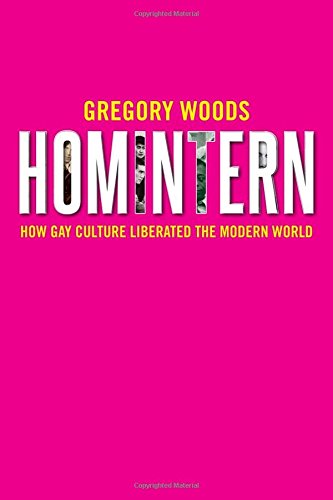‘Homintern: How Gay Culture Liberated the Modern World’ by Gregory Woods

Author: Dave White
July 16, 2016
When it comes to LGBT civil rights, the popular narrative often promotes the notion that, in the decades before Stonewall, queer people existed only in the shadows, communicating in subtle glances and hushed tones about a “love that dare not speak its name.” Quite simply, until there was something, there was nothing. In reality, however, openly gay men and lesbians have been active members of societies for well over a century, though frequently as persona non grata whose contributions and stories have been assimilated into larger histories or forgotten altogether.
In Homintern, British poet and scholar Gregory Woods has gathered the often overlooked or underappreciated stories of over a century of gay men and women from around the world and woven a remarkably cohesive narrative underscoring just how much they’ve shaped our cultures. Probably unfamiliar to most, the book’s title refers to a long-forgotten conspiracy theory wherein late 19th and early 20th century gays and lesbians amassed considerable power through worldwide networks intent on reshaping society. It was, according to Woods, “a joke, a nightmare, or a dream, depending on one’s point of view.” Regardless of perspective, it started a conversation about sexual freedom and an “us” versus “them” mentality that has dramatically changed the way the world considers sexual expression.
As a narrative, Homintern hovers somewhere between a scholarly work and one that is intended for a more general audience. On the one hand, it is a thoroughly researched and brilliantly executed exploration of how the emergence of a visible homosexual identity caused heteronormative societies to rethink long-held understandings of sexual constructs. Yet, on the other hand, Homintern is often so broad in scope and literary in tone that it fails to offer any new insights into what was a major turning point in global identity politics.
To be fair, Woods is more or less upfront about the paradoxical nature of his book, stating “this is a poet’s book… an image, or sequence of images, on the reader’s imagination, rather than… [a] linear argument.” Indeed, Woods’ talent for and experience with creative writing is Homitern’s greatest asset. Over roughly 400 pages, the reader is guided through an intercontinental journey from Wilde’s London to Isherwood’s Berlin to Baldwin’s Harlem, among others, all without ever losing his thread or falling back on sensationalist speculation. The result is a thoroughly enjoyable and easily accessible text exploring the complex dialectical dance between opposing sides as they not only influenced each other, but their respective cultures as well.
Among the more refreshing aspects of Homintern is Woods’ very deliberate attempt to avoid the more common limitations imposed upon academic explorations of the past like a narrow geographical scope when tracing the evolution of the subject. Surely there is enough information to focus on a single country or region of the world; yet Woods makes a compelling case for why we shouldn’t analyze each in a vacuum, particularly as advances in communication give the social mores of an individual culture a much larger reach. Moreover, Woods appears to make every attempt to celebrate gay men and lesbians equally. For every Oscar Wilde or Samuel Steward, there is a Radclyffe Hall or Gertrude Stein; an aspect of queer historical texts that is too often lacking, thus contributing to an even greater imbalance in LGBT historical narratives.
Woods’ obvious talent notwithstanding, as I neared the end of the book, I couldn’t help but wonder to what end the author (and ultimately the reader) invested so much time in this work. For older readers, the men and women that populate these pages will likely be familiar, making it feel more like an introductory text on gay history than a forward-thinking work of scholarship; yet, that might be what makes Homintern such a valuable contribution to the study of queer history. Although he offers relatively little new information or insight into our collective past, for a generation raised in the era of Modern Family, marriage equality, and romantic (albeit factually questionable) retellings of the Stonewall riots, Woods’ brilliantly cohesive collection of pre-Stonewall narratives will be a revelation that shatters myths about the dark isolation of pre-1960s queerness. The fact is we should never have had to put forth so much effort to find the most basic information about those who have come before us. Now, thanks to writers like Gregory Woods and books like Homintern, we won’t have to.
Homintern: How Gay Culture Liberated the Modern World
By Gregory Woods
Yale University Press
Hardcover, 9780300218039, 421 pp.
May 2016

